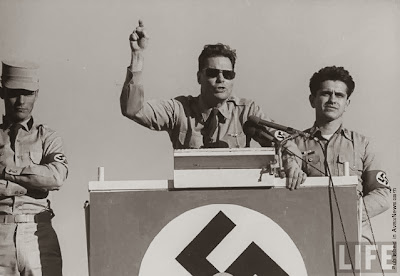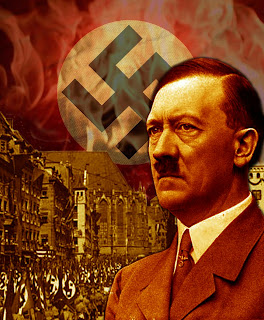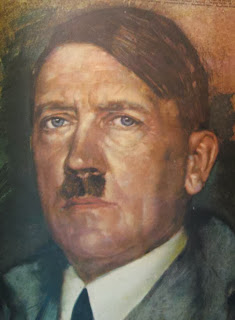“I have fought against white domination, and I have fought against black domination. I have cherished the ideal of a democratic and free society in which all persons live together in harmony and with equal opportunities. It is an ideal which I hope to live for and to achieve. But if needs be, it is an ideal for which I am prepared to die.”
Biography
Nelson Mandela
“Former
President of South Africa”
Nelson Rolihlahla Mandela was a South African
anti-apartheid revolutionary, politician, and philanthropist who served as
President of South Africa from 1994 to 1999. Wikipedia
Born: July
18, 1918, Mvezo, South
Africa
Died: December
5, 2013, Houghton
Estate, South Africa
Movies: Mandela: Long
Walk to Freedom
Spouse: Graça Machel (m.
1998–2013), More
Children: Makaziwe
Mandela, Makgatho
Mandela, Madiba
Thembekile Mandela, Zenani
Mandela, Zindziswa
Mandela
Awards: Nobel
Peace Prize, Bharat Ratna, Time's Person of the Year,Sakharov
Prize, Presidential
Medal of Freedom, Congressional Gold Medal, Arthur Ashe Courage Award, Queen
Elizabeth II Diamond Jubilee Medal, Gandhi Peace Prize, Philadelphia
Liberty Medal,Jawaharlal Nehru Award for International Understanding, Queen
Elizabeth II Golden Jubilee Medal, Lenin Peace Prize, Nishan-e-Pakistan, Al-Gaddafi
International Prize for Human Rights,Ambassador of Conscience Award, International
Simón Bolívar Prize,United Nations Prize in the Field of Human Rights, Order
of the Nile,World Citizenship Award, U Thant Peace Award, Félix
Houphouët-Boigny Peace Prize, Indira Gandhi Award for International
Justice and Harmony, Isitwalandwe Medal, Freedom of the City of
Aberdeen,Bruno Kreisky Award, Carter–Menil Human Rights Prize, Bishop
John T. Walker Distinguished Humanitarian Service Award, Giuseppe Motta
Medal, Ludovic-Trarieux International Human Rights Prize, J. William
Fulbright Prize for International Understanding, W E B DuBois
International Medal, Prince of Asturias Award for International
Cooperation, Harvard Business School Statesman of the Year Award
Rolihlahla
Mandela was born into the Madiba clan in Mvezo, Transkei, on July 18, 1918, to
Nonqaphi Nosekeni and Nkosi Mphakanyiswa Gadla Mandela, principal counsellor to
the Acting King of the Thembu people, Jongintaba Dalindyebo.
His father
died when he was 12 years old and the young Rolihlahla became a ward of
Jongintaba at the Great Place in Mqhekezweni. Hearing the elder’s stories of
his ancestor’s valour during the wars of resistance, he dreamed also of making
his own contribution to the freedom struggle of his people.
He attended
primary school in Qunu where his teacher Miss Mdingane gave him the name
Nelson, in accordance with the custom to give all school children “Christian”
names.
He completed
his Junior Certificate at Clarkebury Boarding Institute and went on to
Healdtown, a Wesleyan secondary school of some repute, where he matriculated.
Nelson
Mandela began his studies for a Bachelor of Arts degree at the University
College of Fort Hare but did not complete the degree there as he was expelled
for joining in a student protest.
He completed
his BA through the University of South Africa and went back to Fort Hare for
his graduation in 1943.
On his
return to the Great Place at Mqhekezweni the King was furious and said if he
didn’t return to Fort Hare he would arrange wives for him and his cousin
Justice. They ran away to Johannesburg instead, arriving there in 1941. There
he worked as a mine security officer and after meeting Walter Sisulu, an estate
agent, who introduced him to Lazar Sidelsky. He then did his articles through a
firm of attorneys, Witkin Eidelman and Sidelsky.
Meanwhile he
began studying for an LLB at the University of the Witwatersrand. By his own
admission he was a poor student and left the university in 1952 without
graduating. He only started studying again through the University of London
after his imprisonment in 1962 but also did not complete that degree.
In 1989,
while in the last months of his imprisonment, he obtained an LLB through the
University of South Africa. He graduated in absentia at a ceremony in Cape
Town.
Nelson
Mandela, while increasingly politically involved from 1942, only joined the
African National Congress in 1944 when he helped to form the ANC Youth League.
In 1944 he
married Walter Sisulu’s cousin Evelyn Mase, a nurse. They had two sons, Madiba
Thembekile ‘Thembi’ and Makgatho and two daughters both called Makaziwe, the
first of whom died in infancy. They effectively separated in 1955 and divorced
in 1958.
Nelson
Mandela rose through the ranks of the ANCYL and through its work, in 1949 the
ANC adopted a more radical mass-based policy, the Programme of Action.
In 1952 he
was chosen at the National Volunteer-in-Chief of the Defiance Campaign with
Maulvi Cachalia as his deputy. This campaign of civil disobedience against six
unjust laws was a joint programme between the ANC and the South African Indian
Congress. He and 19 others were charged under the Suppression of Communism Act
for their part in the campaign and sentenced to nine months hard labour,
suspended for two years.
A two-year
diploma in law on top of his BA allowed Nelson Mandela to practice law, and in
August 1952 he and Oliver Tambo established South Africa’s first black law
firm, Mandela and Tambo.
At the end
of 1952 he was banned for the first time. As a restricted person he was only
permitted to watch in secret as the Freedom Charter was adopted in Kliptown on
26 June 1955.
Nelson
Mandela was arrested in a countrywide police swoop on 5 December 1955, which
led to the 1956 Treason Trial. Men and women of all races found themselves in
the dock in the marathon trial that only ended when the last 28 accused,
including Mr Mandela were acquitted on 29 March 1961.
On 21 March
1960 police killed 69 unarmed people in a protest against the pass laws held at
Sharpeville. This led to the country’s first state of emergency and the banning
of the ANC and the Pan Africanist Congress on 8 April. Nelson Mandela and his
colleagues in the Treason Trial were among thousands detained during the state
of emergency.
During the
trial on 14 June 1958 Nelson Mandela married a social worker, Winnie
Madikizela. They had two daughters, Zenani and Zindziswa. The couple divorced
in 1996.
Days before
the end of the Treason Trial Nelson Mandela travelled to Pietermaritzburg to
speak at the All-in Africa Conference, which resolved that he should write to
Prime Minister Verwoerd requesting a non-racial national convention, and to
warn that should he not agree there would be a national strike against South
Africa becoming a republic. As soon as he and his colleagues were acquitted in
the Treason Trial Nelson Mandela went underground and began planning a national
strike for 29, 30 and 31 March. In the face of massive mobilisation of state
security the strike was called off early. In June 1961 he was asked to lead the
armed struggle and helped to establish Umkhonto weSizwe (Spear of the Nation).
On 11
January 1962, using the adopted name David Motsamayi, Nelson Mandela secretly
left South Africa. He travelled around Africa and visited England to gain
support for the armed struggle. He received military training in Morocco and
Ethiopia and returned to South Africa in July 1962. He was arrested in a police
roadblock outside Howick on 5 August while returning from KwaZulu-Natal where
he briefed ANC President Chief Albert Luthuli about his trip.
He was
charged with leaving the country illegally and inciting workers to strike. He
was convicted and sentenced to five years' imprisonment which he began serving
in the Pretoria Local Prison. On 27 May 1963 he was transferred to Robben
Island and returned to Pretoria on 12 June. Within a month police raided a
secret hide-out in Rivonia used by ANC and Communist Party activists, and
several of his comrades were arrested.
On 9 October
1963 Nelson Mandela joined ten others on trial for sabotage in what became
known as the Rivonia Trial. While facing the death penalty his words to the court
at the end of his famous ‘Speech from the Dock’ on 20 April 1964 became
immortalised:
“I have
fought against white domination, and I have fought against black domination. I
have cherished the ideal of a democratic and free society in which all persons
live together in harmony and with equal opportunities. It is an ideal which I
hope to live for and to achieve. But if needs be, it is an ideal for which I am
prepared to die.”
On 11 June
1964 Nelson Mandela and seven other accused: Walter Sisulu, Ahmed Kathrada,
Govan Mbeki, Raymond Mhlaba, Denis Goldberg, Elias Motsoaledi and Andrew
Mlangeni were convicted and the next day were sentenced to life imprisonment.
Denis Goldberg was sent to Pretoria Prison because he was white, while the
others went to Robben Island.
Nelson
Mandela’s mother died in 1968 and his eldest son Thembi in 1969. He was not
allowed to attend their funerals.
On 31 March
1982 Nelson Mandela was transferred to Pollsmoor Prison in Cape Town with
Sisulu, Mhlaba and Mlangeni. Kathrada joined them in October. When he returned
to the prison in November 1985 after prostate surgery Nelson Mandela was held
alone. Justice Minister Kobie Coetsee visited him in hospital. Later Nelson
Mandela initiated talks about an ultimate meeting between the apartheid
government and the ANC.
On 12 August
1988 he was taken to hospital where he was diagnosed with tuberculosis. After
more than three months in two hospitals he was transferred on 7 December 1988
to a house at Victor Verster Prison near Paarl where he spent his last 14
months of imprisonment. He was released from its gates on Sunday 11 February
1990, nine days after the unbanning of the ANC and the PAC and nearly four
months after the release of his remaining Rivonia comrades. Throughout his
imprisonment he had rejected at least three conditional offers of release.
Nelson
Mandela immersed himself in official talks to end white minority rule and in
1991 was elected ANC President to replace his ailing friend Oliver Tambo. In
1993 he and President FW de Klerk jointly won the Nobel Peace Prize and on 27
April 1994 he voted for the first time in his life.
On 10 May
1994 he was inaugurated South Africa’s first democratically elected President.
On his 80th birthday in 1998 he married Graça Machel, his third wife.
True to his
promise Nelson Mandela stepped down in 1999 after one term as President. He
continued to work with the Nelson Mandela Children’s Fund he set up in 1995 and
established the Nelson Mandela Foundation and The Mandela Rhodes Foundation.
In April 2007
his grandson Mandla Mandela became head of the Mvezo Traditional Council at a
ceremony at the Mvezo Great Place.
Nelson
Mandela never wavered in his devotion to democracy, equality and learning.
Despite terrible provocation, he never answered racism with racism. His life
has been an inspiration to all who are oppressed and deprived; to all who are
opposed to oppression and deprivation.
He died at
his home in Johannesburg on 5 December 2013.



































.jpg)
.jpg)



.jpg)